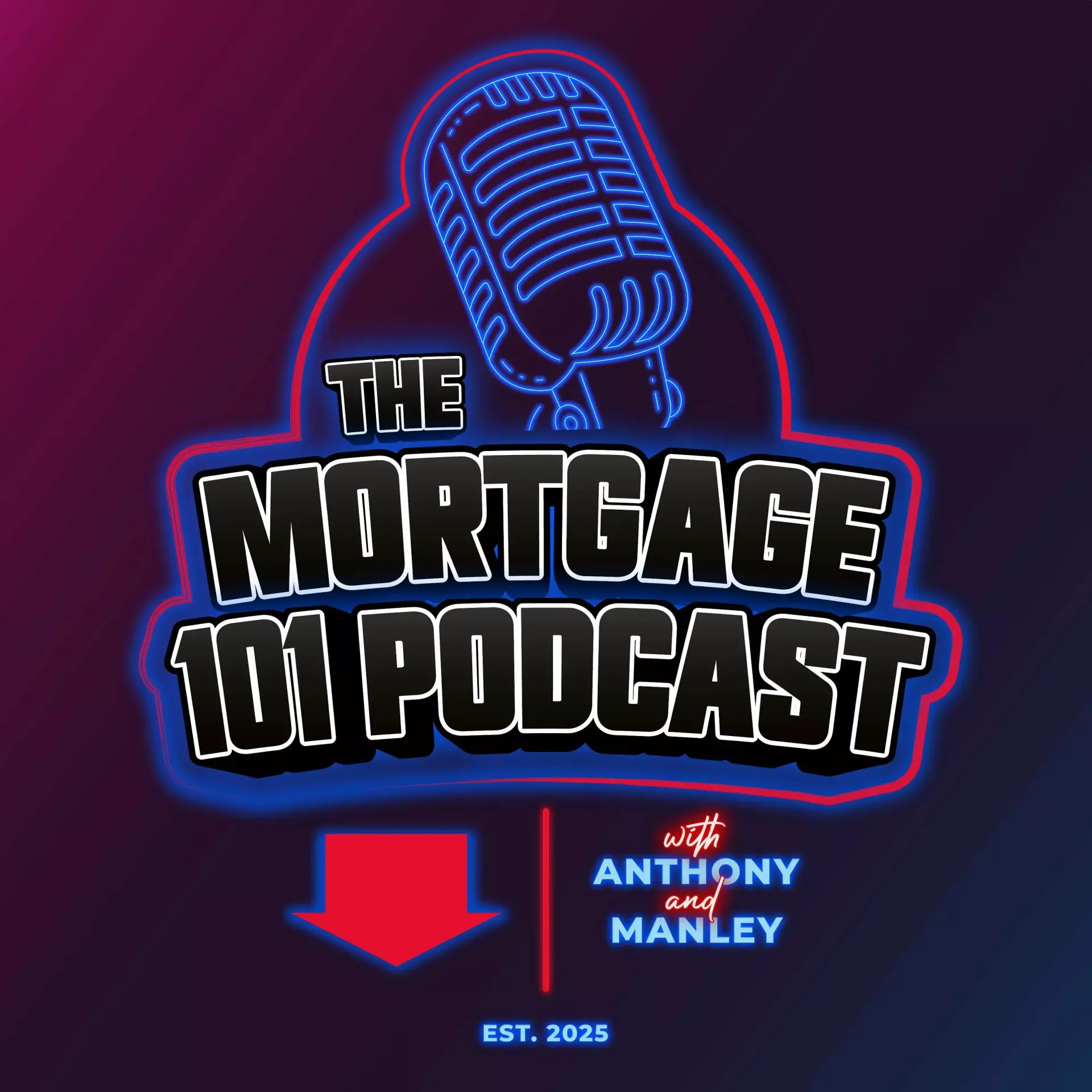Red Light, Green Light: Mastering the Housing Market! | Mortgage 101 Ep. 9
In Episode 9 of the Mortgage 101 Podcast, hosts Anthony and Manley navigate the 2025 housing market’s mixed signals, likened to a “red light, green light” game. They discuss why the Federal Reserve’s “higher for longer” rate stance persists, how single-family home sales are surging despite economic caution, and why investors are retreating, creating opportunities for primary buyers. The episode features a rapid-fire buzzword segment covering terms like trade lines, seller concessions, ARM loans, and closing costs, offering actionable advice for buyers to plan and act confidently.
Listen to the full episode: https://youtu.be/PE8zTJa-WcA?feature=shared
[00:01] Welcome to Mortgage 101: Episode 9
Manley: Welcome to Episode 9 of the Mortgage 101 Podcast! I’m Manley in Wisconsin, with producer Kevin Hansen. Anthony, how’s the vibe in Hawaii?
Anthony: Aloha, Manley! I’m ready to dive into the 2025 housing market’s “red light, green light” signals, helping listeners make smart moves.
Manley: Today, we’re decoding the Fed’s rate stance, exploring surging home sales, and why investors are stepping back. Plus, Kevin’s rapid-fire buzzwords to clarify key terms.
[00:32] Navigating Mixed Market Signals
Why is the housing market sending mixed signals?
Manley: The market feels like a childhood game of “red light, green light”—one signal says go, another says stop. Single-family home sales jumped in April 2025, but economic warning signs, like the Idea Index dropping into the red, signal caution.
Anthony: Buyers are waiting for a clear “go” from the Fed, but it’s a yellow light. The Fed’s mantra of “higher for longer” rates reflects caution, not a full stop.
Manley: It’s about understanding your circumstances—don’t let fear of the unknown drive decisions. Consult professionals to make informed choices.
[02:17] Why Higher Rates Aren’t the Villain
How should buyers approach high interest rates?
Anthony: The Fed’s holding rates high to cool spending, like herding cattle in the Wild West. They’re not biting, just barking to guide the economy.
Manley: Despite geopolitical turmoil, like tensions in Iran, rates aren’t spiking as expected. Buyers shouldn’t wait for perfect conditions—act based on sound advice.
Anthony: Rates are stable, not rising or dropping significantly. Plan now, as waiting for a perfect market could mean missing opportunities.
[06:23] Inventory Myths and Seller Strategies
Is rising inventory a buyer’s market?
Anthony: Inventory is up slightly but still historically low compared to 2019–2020. Sellers aren’t desperate, sitting on low-rate mortgages and equity.
Manley: Buyers expecting fire sales are mistaken. Lowball offers (e.g., $30,000–$50,000 under asking) are often rejected. Sellers should price strategically under the curve to drive interest, not overprice.
Anthony: It’s not a buyer’s market—sellers are selective, and buyers need realistic expectations to compete.
[09:28] Global Influences on Mortgage Rates
How do global factors affect mortgage rates?
Anthony: The Fed paused quantitative easing, but the administration is encouraging global investors (e.g., India, UK) to buy mortgage-backed securities, potentially lowering yields and rates. A 0.5% rate drop could add $300 billion to GDP.
Manley: Geopolitical uncertainty, like Iran-Israel tensions, introduces fear, keeping rates higher. The market dislikes uncertainty, counteracting efforts to lower rates.
Anthony: The Fed’s silence is strategic—they’re watching inflation and jobs. Rate cuts depend on economic necessity, not whims.
[13:54] Should You Buy Now or Wait?
Is now the right time to buy a home?
Anthony: Don’t wait for perfect rates or conditions—you’ll get “smacked” by the moving market. If you need a home, prioritize function over timing.
Manley: Waiting for rates in the 2–3% range is unrealistic—they’ve sailed away. Buyers are accepting 6% rates, knowing they can refinance later.
Anthony: If you’re planning to buy within five years, the next 6–12 months are economical. Act before the herd rushes in, as markets move in cycles.
[19:06] Rapid-Fire Buzzword Segment
What key mortgage terms should buyers know?
Kevin: Time for rapid-fire buzzwords—keep answers to one or two sentences!
Trade Lines in Dispute (Anthony)
Anthony: Trade lines are credit report items like credit cards or loans. Active disputes can lower your credit score if removed, so review with your lender to avoid approval issues.
Seller Concessions (Manley)
Manley: Seller concessions are funds the seller provides to cover buyer costs, like closing fees, but they’re limited by loan type and must be negotiated upfront.
ARM Loans (Anthony)
Anthony: Adjustable-rate mortgages (ARMs) are fixed for 3–10 years, then adjust based on market rates—ideal for savvy buyers expecting rate drops but riskier with high upfront costs.
Closing Costs (Manley)
Manley: Closing costs include lender fees (e.g., appraisals, title work), prepaid items (e.g., insurance, interest), and escrow holdbacks—focus on lender fees to judge if you’re getting a fair deal.
[47:53] Investor Retreat Creates Opportunities
Why are investors stepping back?
Anthony: Investor activity is down over 60% in some markets as high rates and costs (25% down minimum) make investments less viable compared to low-rate years.
Manley: This shift reduces competition, giving primary buyers more options without cash buyers dominating. Inventory is up, but it won’t last forever as rates drop.
Anthony: Investors are at a “pit stop,” waiting for clearer market signals. Buyers should act now to avoid future inventory shortages.
[51:50] Looking Ahead: Plan for 2025–2026
How can buyers prepare for the future market?
Anthony: Plan, don’t wait. Get pre-approved, understand your numbers, and consult professionals to map out options, whether buying or switching homes.
Manley: The Fed may cut rates twice in 2025, but the window could close fast. Buyers who prepare now—knowing their market and purchase power—will win.
Anthony: Make decisions based on facts, not fear. Clarity comes from preparation, not perfect timing.
FAQ
Why are mortgage rates staying high in 2025?
The Fed’s “higher for longer” stance and geopolitical uncertainty keep rates elevated, but global investment in mortgage-backed securities could lower them.
Should I wait for lower rates to buy a home?
Waiting for perfect rates risks missing opportunities—buy when you’re ready, as you can refinance later if rates drop.
How do ARM loans work in today’s market?
ARMs offer lower initial rates for 3–10 years but adjust later, making them suitable for buyers expecting rate drops, though banks may charge higher upfront costs.
Listen to the full episode:
https://youtu.be/PE8zTJa-WcA?feature=shared

